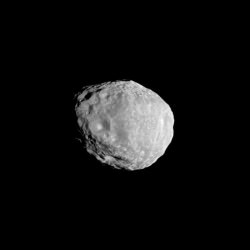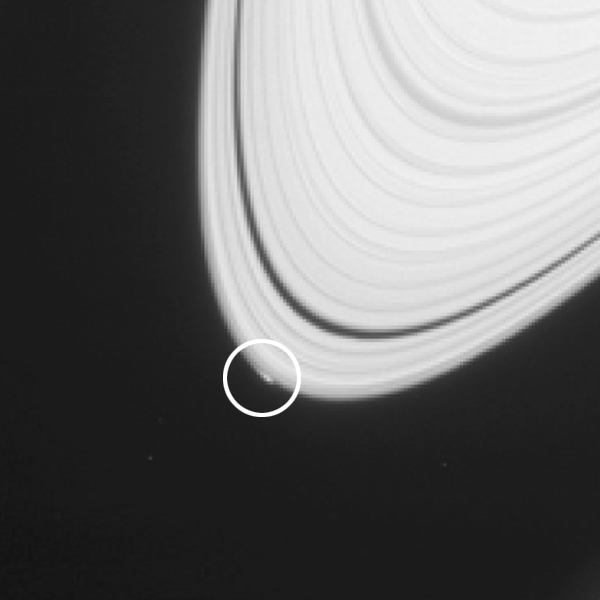Congratulations! It’s a baby… moon? A bright clump spotted orbiting Saturn at the outermost edge of its A ring may be a brand new moon in the process of being born, according to research recently published in the journal Icarus.
“We have not seen anything like this before,” said Carl Murray of Queen Mary University in London, lead author of the paper. “We may be looking at the act of birth, where this object is just leaving the rings and heading off to be a moon in its own right.”
In images acquired with Cassini’s narrow-angle camera in 2013, a 1,200-kilometer-long, 10-kilometer-wide arc of icy material was observed traveling along the edge of the A ring. The arc is thought to be the result of gravitational perturbations caused by an as-yet unseen embedded object about a kilometer wide — possibly a miniature moon in the process of formation.

The half-mile-wide object has been unofficially named “Peggy,” after lead author Murray’s mother-in-law (whose 80th birthday it was on the day he was studying the Cassini NAC images.) Murray first announced the findings on Dec. 10, 2013 at the AGU 13 meeting in San Francisco.
According to the team’s paper, Peggy’s effects on the A ring has been visible to Cassini since May 2012.
Eventually Peggy may coalesce into a slightly larger moon and move outward, establishing its own orbital path around Saturn. This is how many of Saturn’s other moons are thought to have formed much further back in the planet’s history. Now, its rings having been depleted of moon-stuff, can only create tiny objects like Peggy.
“Witnessing the possible birth of a tiny moon is an exciting, unexpected event.”
– Linda Spilker, Cassini Project Scientist at JPL
While it is possible that the bright perturbation is the result of an object’s breakup rather than formation, researchers are still looking forward to finding out more about its evolution.
Read more on the NASA/JPL news release here.
To find out more about the Cassini mission visit saturn.jpl.nasa.gov and www.nasa.gov/cassini. The Cassini imaging team’s website is at ciclops.org.

